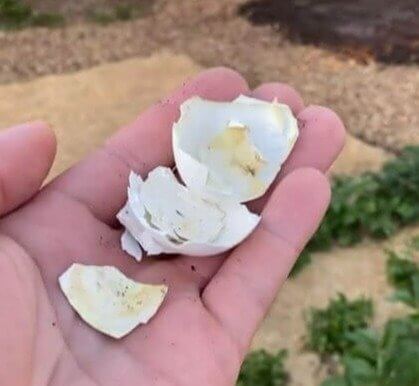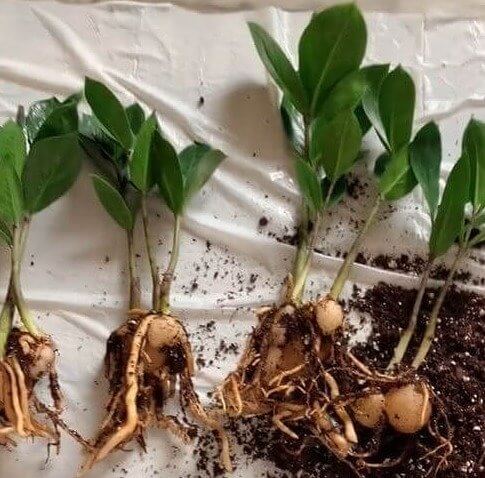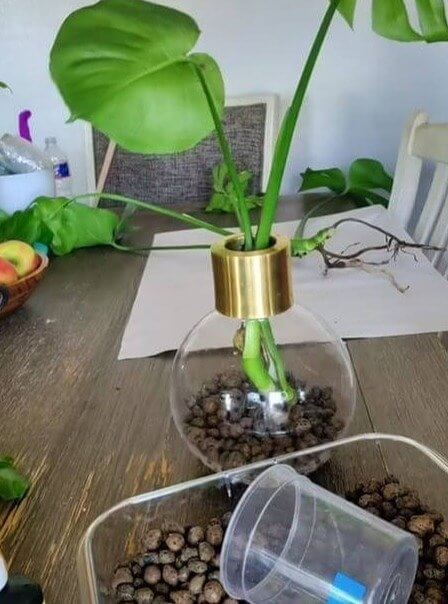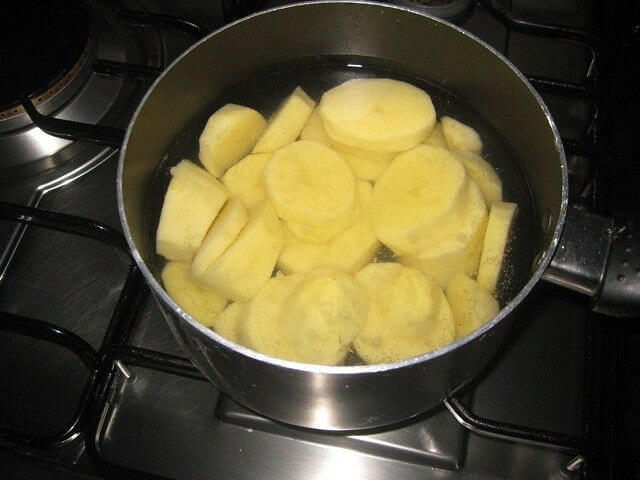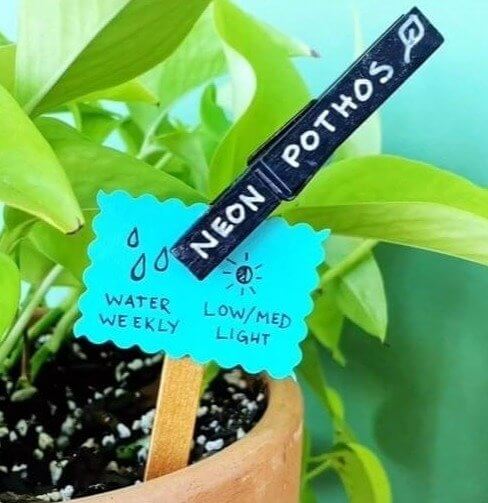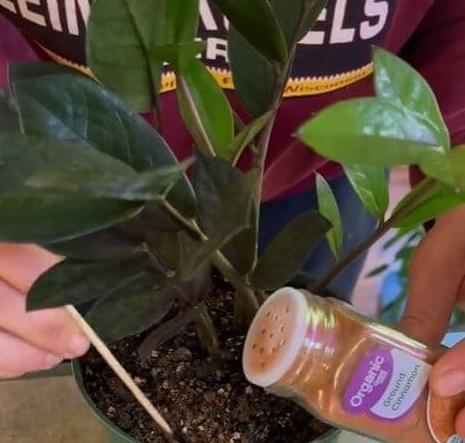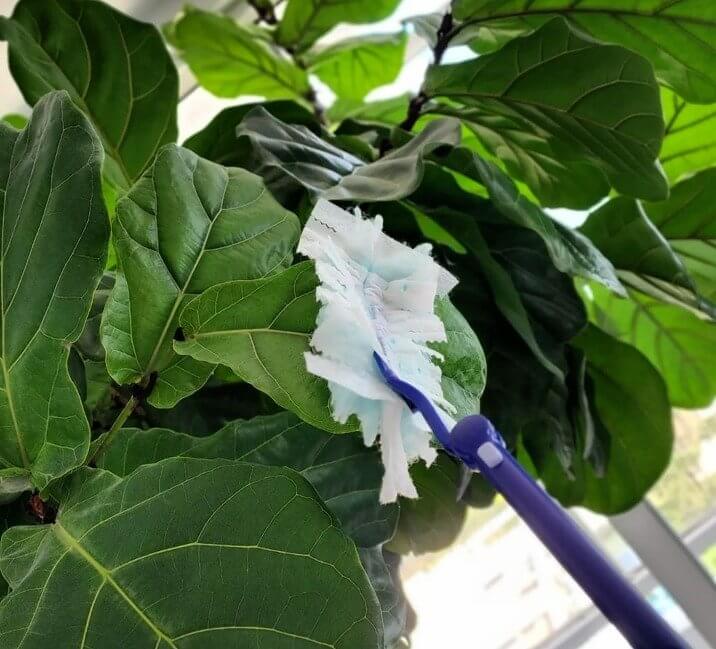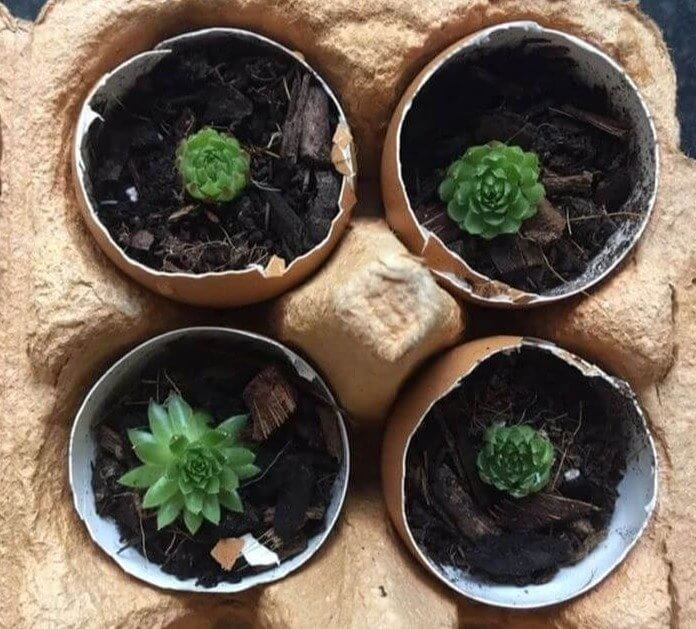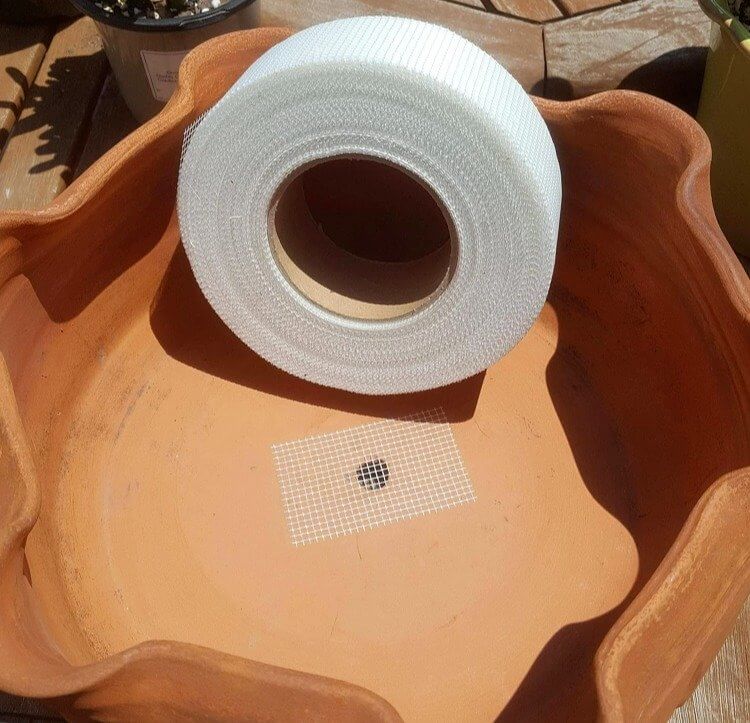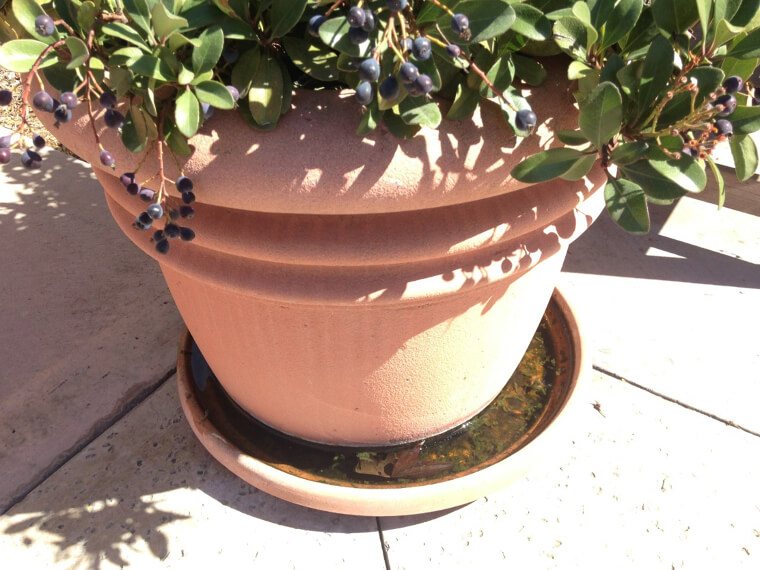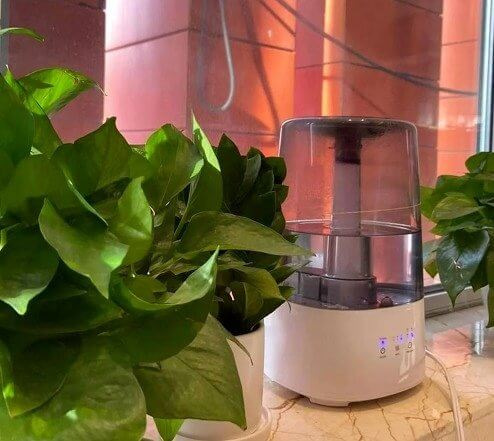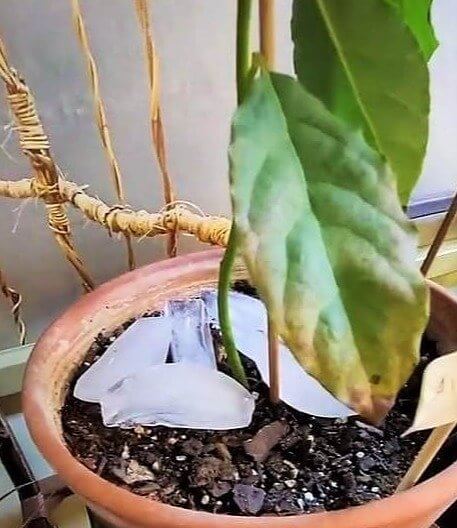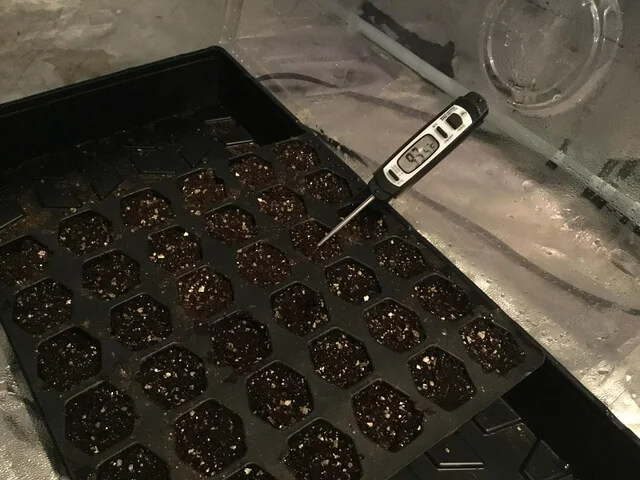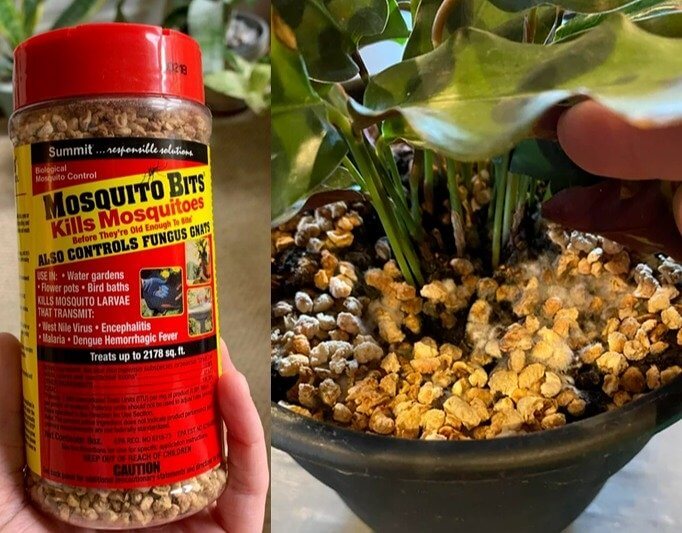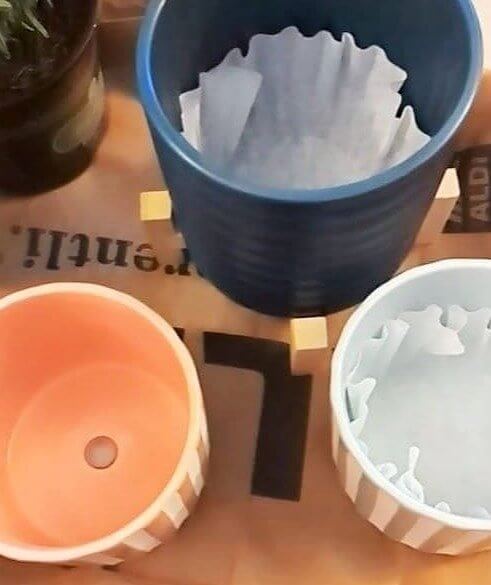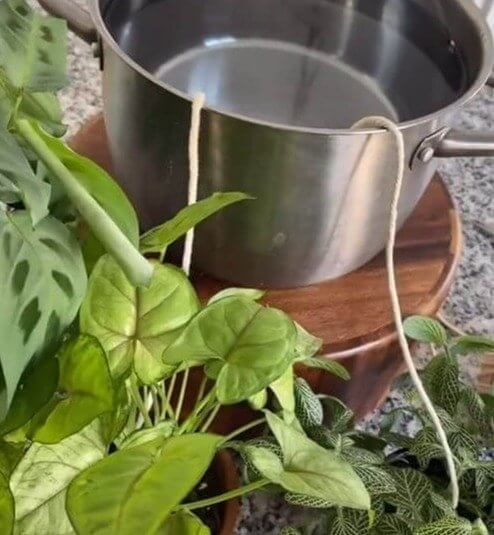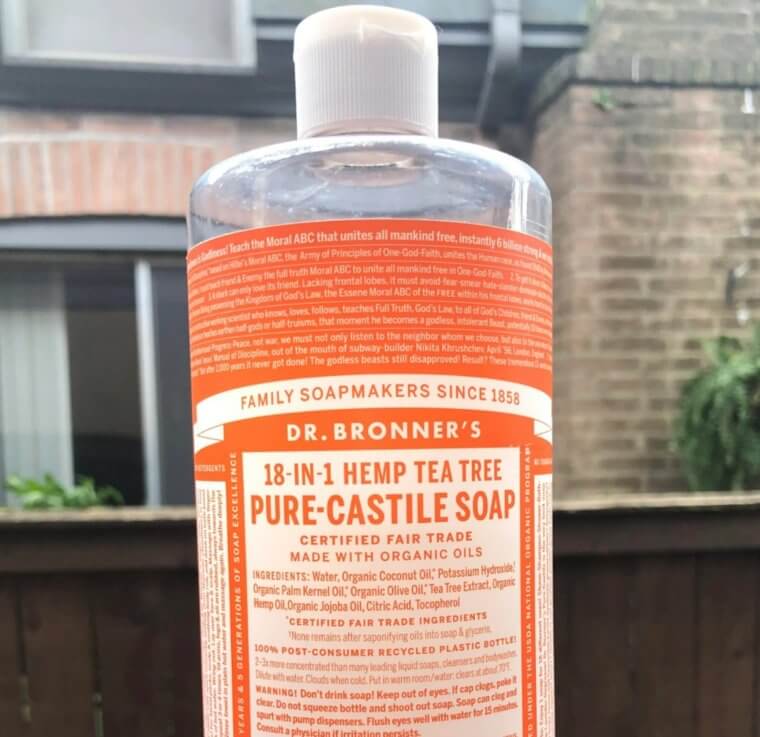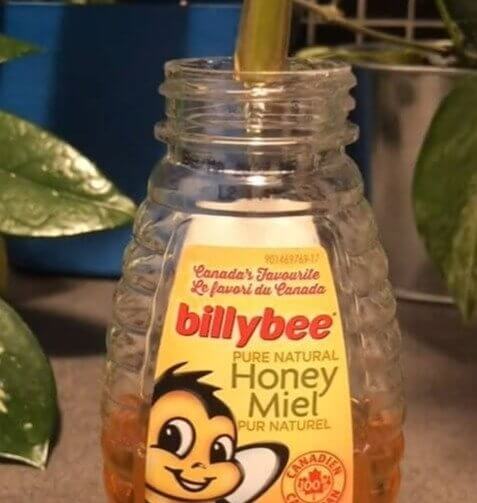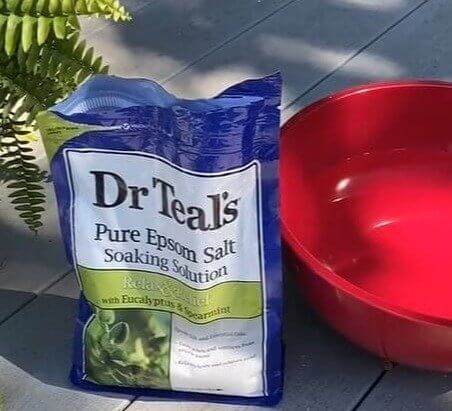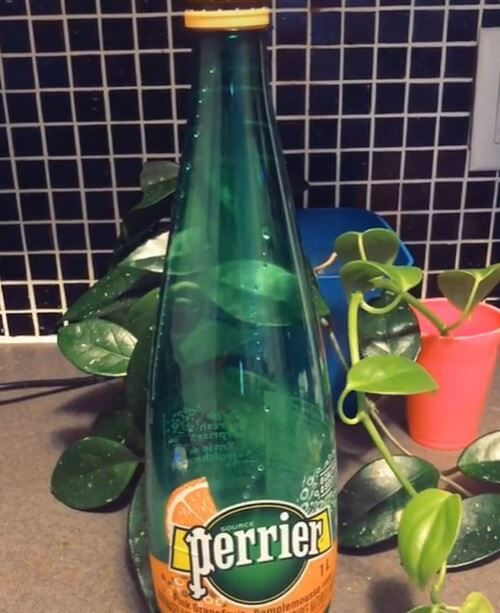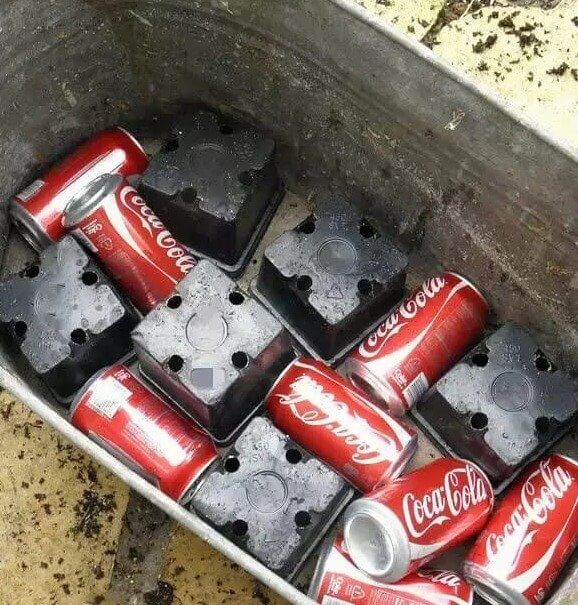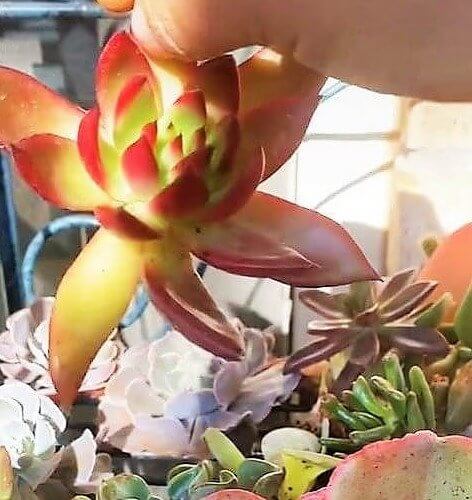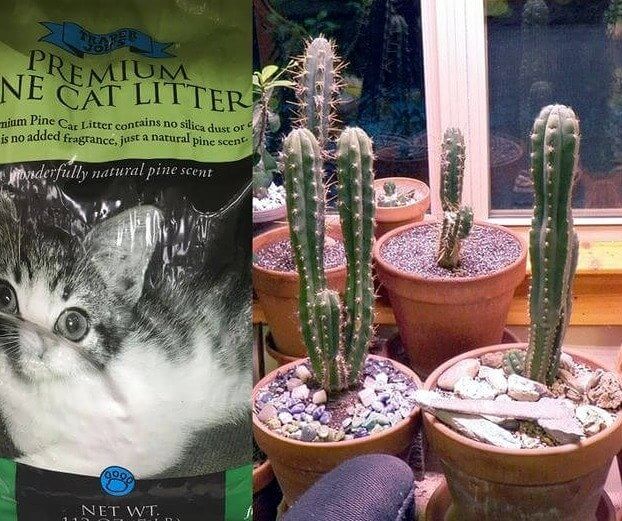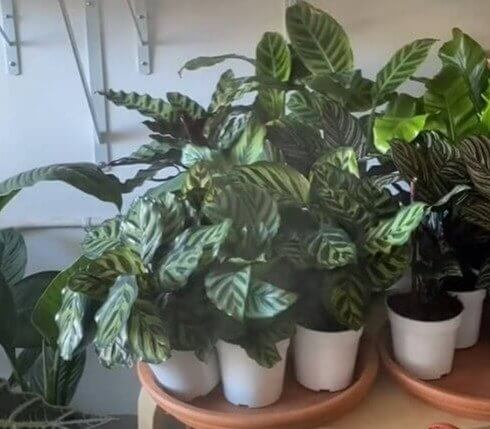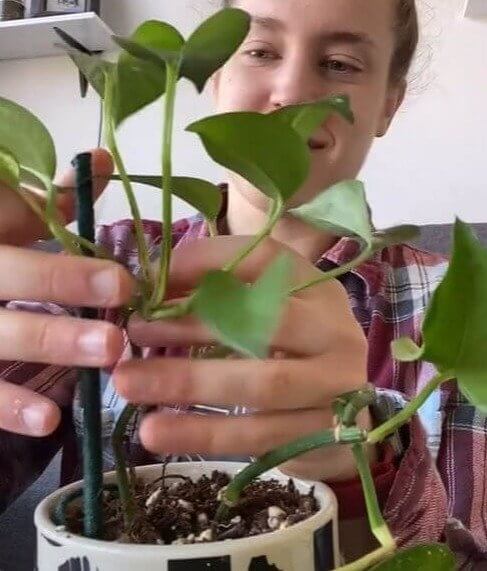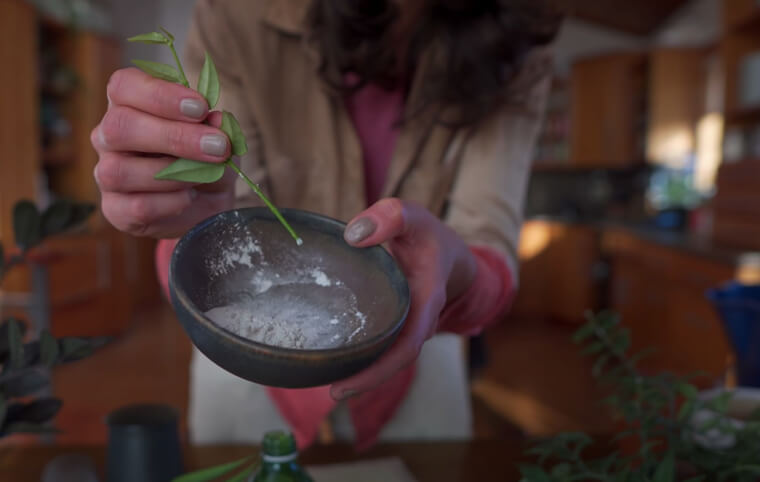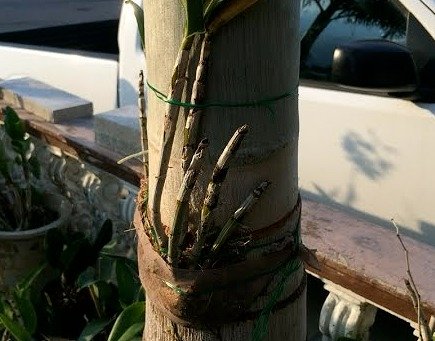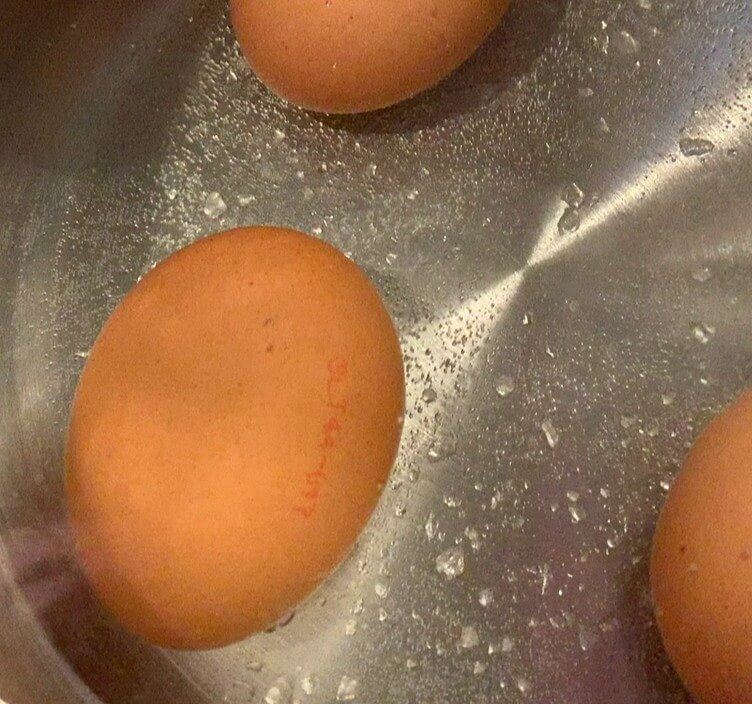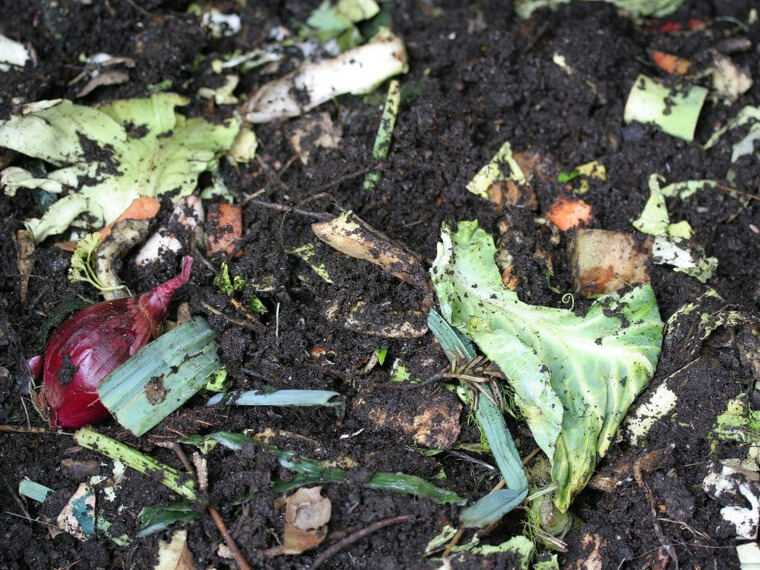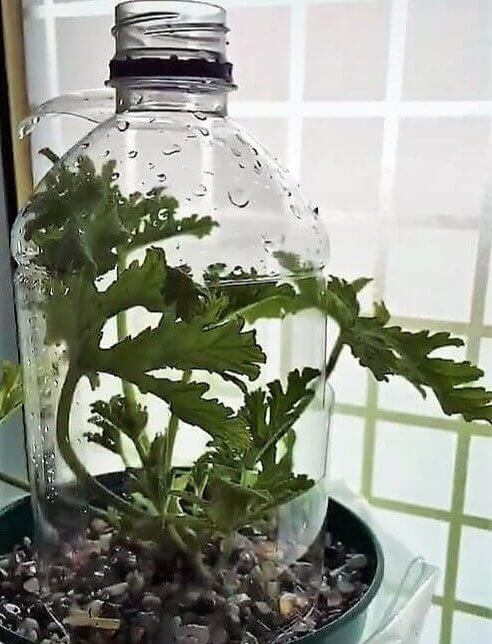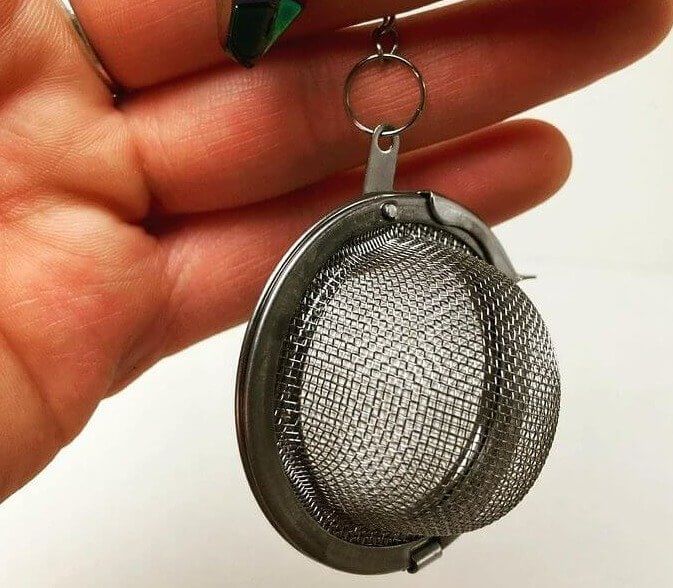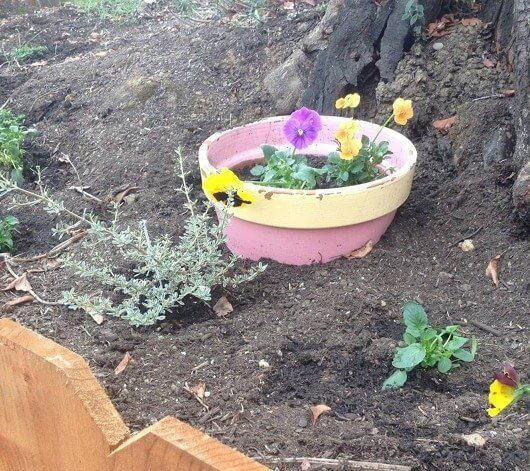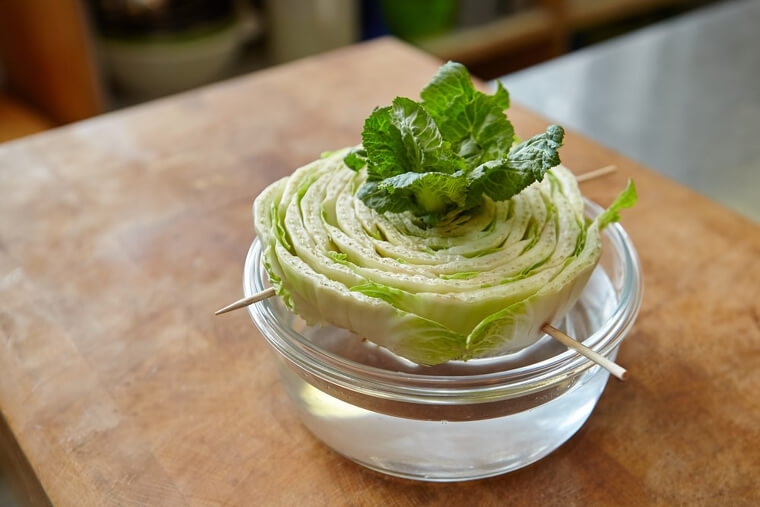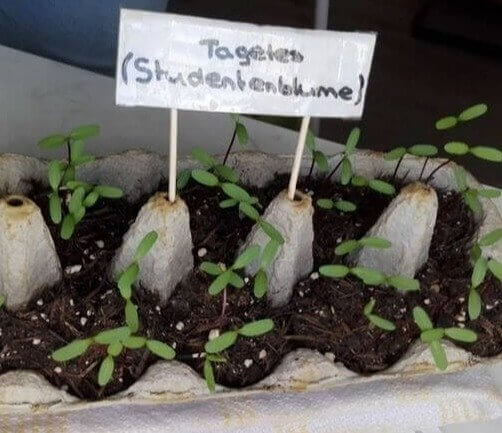Let Tap Water Rest Before Watering Your Plants With It
We're sure almost everyone out there is guilty of watering their plants with tap water. However, some of the chemicals added to tap water aren't that great for your plants. For example, chlorine in tap water might be great for ensuring you don't get sick, but it's not so great for your plants. Luckily, there's an easy solution, and it just involves letting your tap water "rest" overnight before giving it to your plants.
This will give the chlorine in the water enough time to evaporate, leaving the tap water chlorine-free and your plants all the happier for it.
Fertilize Soil With Eggshells
Eggshells make great fertilizer for both potted and unpotted plants. The best thing about this little hack is that eggshells are incredibly easy to incorporate into your houseplant or gardening routine. All you have to do is throw them in your plant's pot and let nature do the rest. The calcium in the shells will help keep things balanced and make sure your plants get a ton of nutrients to grow happy and healthy.
On top of that, you're not letting the shells go to waste the same way you would if you were to throw them in the garbage. Some people even choose to grind up their shells and incorporate them into their potting mixes.
Make Sure to Loosen Roots When Repotting a Plant
If you have potted plants, odds are there will come a time when you'll have to repot a plant. There's just no getting around it. Luckily, it's a fairly simple task, but there is one step that's essential to making sure the repotted plant is able to thrive. You must loosen the root ball. The root ball is the tightly woven collection of roots right underneath the stalk of the plant.
For the plant to properly take hold of its new soil, you must make sure to slightly loosen this ball by gently running your fingers through it.
The Benefits of Using Clay Pebbles
Like clay pots, clay pebbles are great for use with potted plants. They retain moisture well and then release that moisture when the soil gets too dry. If you want to use clay pebbles, just be sure to put them at the bottom of the pot so that they can also help with aeration and drainage. In addition to the benefits mentioned above, clay pebbles also help prevent too much acidity and can halt root rot.
You should be able to find clay pebbles at most places you normally shop for gardening and planting materials. Of course, if you don't want to spend the extra money, regular pebbles work well in pots, too.
Make Sure Your Soil Isn't Too Tightly Packed
The soil in pots can often become so tightly packed that air cannot get down to where the roots are located. To remedy this, try aerating your potted plants using chopsticks. The sticks are usually the perfect size for most potted plants, and all you really have to do is poke some holes in the soil using chopsticks. You can do it gently, but make sure to get down there.
A little bit of damage to your plant's roots is much better than not being able to breathe due to soil that's packed too tightly. Most plants also don't have any problem repairing slight root damage.
Use Cooking Water As Fertilizer
This is a great hack for anyone looking to add some nutrients to their plants' soil. You can actually use your cooking water from things like potatoes and pasta to fertilize your plants. The water contains a bunch of great nutrients that plants love, such as calcium, nitrogen, and phosphorus. All you have to do is save it and let it cool after boiling food, and then use it to water your plants instead of normal still water.
However, you might want to ensure that you only use unsalted cooking water to fertilize your plants, as too much salt isn't good for most plants' health.
Plant Markers Making Keeping Track of Your Plants' Needs Easier
This tip is more fitting for those with a lot of plants and who are having trouble keeping up with their different watering schedules. But if you're a newbie plant parent, this could work for you, too, even if you have just one plant. You can use ice cream sticks to make small, biodegradable markers. This helps you keep track of when each plant needs to be watered, how much soon they need, and more.
Of course, you don't have to limit yourself to just labeling the markers with watering schedules and other details. You can add whatever you want, like nicknames for your plants and little doodles.
Cinnamon Helps Fight Infections
It's no secret that cinnamon has anti-bacterial properties that can benefit humans, but did you know that it can also benefit your plants? Yes, it's true! Cinnamon can help prevent fungus, mites, and other pests and fertilize your plant's soil. All you have to do is sprinkle some in your plant's pot and let it do the rest. You can also use it to make your own special solution.
Just mix a couple of spoons of cinnamon and water into a spray bottle and use it to spray your plant's leaves so that no pests try to attach themselves to your plant.
Dust off Your Plant's Leaves
This is one that people don't often think about with their indoor plants, but it's a really good habit to make sure dust doesn't accumulate on their leaves. That's because plants rely on their leaves to soak in sunlight and carbon dioxide, so even a little bit of dust can hinder those processes. Think of solar panels and how dust can reduce their efficiency. It's the same principle with plants.
Luckily, all you need to do is spray your plant's leaves with a tiny bit of water and dust them off the same way you'd dust off your table.
Use Eggshells as a Pot for Seedlings
The most important step in replanting cuttings or seeds is making sure they get off to a good start. So, why not consider using eggshells as pots for new seedlings? Not only are they the perfect size, but the natural nutrients stored in the shells will help fertilize the soil. Eggshells contain a lot of calcium, which is vital for any budding seedling. There are also a couple of extra benefits to using eggshells as pots.
The shells will help with your soil's nitrogen levels, which in turn helps plants grow quicker and healthier than if you were to use a small clay pot or a foam cup.
Put Mesh Screens in Your Pots
This is a great little hack for anyone concerned with losing soil or having runoff in their home or on their patio. To keep as much soil as possible in your pots, you can try to install soil meshes before adding dirt or repotting plants. The meshes should capture most of the soil before it escapes and keep your home or patio free of mud and debris. Soil meshes are generally pretty easy to find at your local gardening or home improvement store and shouldn't be too expensive.
They also sell metal soil meshes if you're worried about plastic.
Don't Let Standing Water Stay in Your Tray for Long
Clay and plastic trays are a great way to keep any excess water where it belongs and not spill out onto your floor. In fact, they're almost vital for anyone wanting to set up a couple of plants around their home. They help make sure soil and water aren't escaping and getting into places they shouldn't be getting into. However, be careful notlet the water stand in the trays for too long.
Many plants can't cope with constantly soggy soil, and it's just generally not a great idea to have standing water all around your home as it can attract insects and bacterial growth.
Add Some Humidity to Your Home - Your Plants Will Thank You
Most people generally don't like a ton of humidity, but the same is not true for most plants, which love excess water in the air. Most of our homes usually have a humidity level of around 30 to 40%, whereas plants prefer at least 50% humidity. But the levels in our homes can drop even further than 30% in the winter, depending on where you live. This is especially not great for tropical plants, which grow in areas with high humidity levels.
So, why not try misting your plants to ensure they don't get too dry? You could also consider getting a humidifier for your home. Your plants will thank you for it.
Water Your Plants With Ice
Ice cubes are a great way to make sure you're not overwatering your plants. The ice melts slowly, only releasing a bit of water at a time, and it can also help plants with fragile stems. However, be careful what plants you use this hack on as some plants, especially those used to a hot or tropical environment, can't tolerate cold temperatures. Plants like orchids, on the other hand, really seem to enjoy ice-cube watering.
This is also a great solution if you're worried about water escaping and taking some of your plant's soil with it, as the ice cubes will only release water gradually.
Try Using Heat Pads
This probably won't apply to all of your plants, but odds are some are used to warmer climates. For those plants that are, you can use heat pads to make sure their roots don't get too cold and to promote growth. All you need to do is set your plants on the pads and set the temperature to something reasonable, like 70 degrees Fahrenheit, and you're good to go.
This will help any new plants quickly grow out of their roots and give them a good foundation for being stronger and healthier later on.
Mosquito Bits Can Fight Pests
Mosquito Bits are a great solution to keep fungus gnats away from your plants. The product is meant to attack mosquito larvae, but the same solution that's used and is detrimental to mosquitos also attacks gnat larvae. All you have to do is pour a bit onto your plant's soil, which should keep the gnats from reproducing. And the best part is the primary ingredient is natural, so it's not detrimental to human or plant health.
Mosquito Bits use something called BTI, which is actually just a bacteria that attacks mosquitoes and gnat larvae. It also doesn't last more than a couple of days in your plant's soil.
Use Coffee Filters For Drainage
There are a couple of different things you can use for pot drainage, but if you're looking for a way to keep soil in and excess water out, coffee filters are a great option. You must place them at the bottom of your pots before filling them with soil. They'll do pretty much the same thing they do with coffee grinds, which is to keep your potting soil inside the pot while allowing excess water to escape.
You can use new coffee filters, but used coffee filters work even better since coffee grinds help fertilize your plant's soil. Coffee filters also have the added benefit of ensuring drain holes don't get clogged up with mud.
How to Water Your Plants While You're Away
This is a nifty hack to help keep your plants moist and happy while you're away from home. All you need is some string and a couple of pots. Fill the pots with water and use a string to connect the water to your plant's pot. The string will soak up the water, and gravity will make sure it gets to your plants. However, larger pots might require a bit more string.
You can use several pieces of string if you have a pot that's a bit deeper, but make sure to use a larger water pot accordingly so that it doesn't use all the water to itself.
Use Soap to Break Up Root Balls
This one might seem counterintuitive, but we promise it works. The next time you have a plant with a really tough root ball that you're having trouble breaking up, try using natural soap. The soap will aid in breaking up the plant's root ball so that it has the best chance of clinging to any new soil you plant it in. However, there is one crucial caveat here.
It's imperative to make sure that the soap is all-natural and doesn't contain any chemicals that might be detrimental to your plant. Castile is a good soap to use if you're unsure what to use.
Put New Clippings and Damaged Plants Into Honey
Like cinnamon, honey has anti-bacterial properties, and plants love it. The next time you take some cuttings, try dipping their stems in honey to ensure they don't catch any nasty diseases while in a fragile state. The honey should also scare away any fungi. The natural sugars found in honey don't hurt either and will give new cuttings much-needed nutrients to help them grow roots. Looks like a win-win.
You can also use honey on fully grown plants that have been damaged if you're worried about them catching diseases, as the same general principle applies here as well.
Give Your Plants Epsom Salt
Epsom salt contains two ingredients most plants desperately crave — magnesium and sulfur. That's why a lot of gardeners use it to create their own solutions. All you have to do is mix two tablespoons with a gallon of water and use the solution to water your plants. Your plants will be happier for it, and you'll have a new fertilizer that's easy to whip up in a pinch.
However, there is a catch here. Just be sure not to use too much salt or water them with the solution too frequently, as too much Epsom salt can cause damage.
Separate Plants That Have A Disease
This one might seem like a no-brainer, but it's really important that you isolate any plants you think might be coming down with an infection or disease. You'd be surprised how quickly disease can spread among plants, and the last thing you want is for your whole garden to get infected and start dying off. Also, try to remove any leaves that look like they might be rotting away or infected.
Nobody wants to lose a plant, but it's better that you lose one than to lose your entire garden due to simply not moving a diseased plant to isolation.
Periodically Water Plants Using Club Soda
It might not seem like it, but club soda and other types of sodas can be good for your plant. They contain nutrients like potassium, phosphorus, and sulfur, which your plants need to thrive. It also doesn't hurt that they usually contain a lot of sugar, which plants love. Of course, it's not advisable to water your plants with soda every day, but just giving them a bit every once in a while can be beneficial.
You might also want to look for sodas that contain more natural ingredients and sugars, as artificial ingredients aren't going to be as good for your plants as natural ingredients.
Use Soda Cans As Filler
Potting soil can be expensive, so it's good to save money where you can. A great way to take up some extra space in a large pot or container is to fill the bottom with aluminum soda cans. This will help you save a bit of money while also making sure those cans go to a good cause and don't end up in a landfill. And that's not the only good thing about this hack.
This also has the added benefit of ensuring your plant's soil isn't too tightly packed together, and you have good drainage in case you ever overwater your plants.
Hydrogen Peroxide Can Halt Rot
If your plant has root rot, it might seem like the end of the road for it, but it doesn't have to be. There might just be a handy item sitting in your cupboard that can help. Hydrogen peroxide might be able to stop your plant's roots from rotting away. Try pouring some hydrogen peroxide into your plant's soil, then just let it sit.
It should work to kill any bacteria that are causing your plant to wither away, and it also has the added benefit of aerating your plant's soil because of all the bubbles it produces.
Let Certain Cuttings Dry
With most plants, you usually want to give new stem cuttings immediate moisture, whether that be in the form of pure water or moist soil. However, cacti and succulents are a bit different. In fact, you want to keep them away from the water right after you cut them. That's because they are susceptible to rot right after being cut and do best if you give them a couple of days to dry out.
After a couple of days are up, and you're pretty sure they're dry, it's okay to go ahead and stick them in the soil. This is probably because these guys are used to dryer climates.
Use Kitty Litter For Cacti
It shouldn't come as much of a surprise that most cacti and succulents don't need a lot of water to thrive. These plants often grow in extremely dry climates and have evolved to get by without a lot of water. In fact, giving them too much water is really not good for these plants and can lead to issues. So, try using clay-based cat litter in combination with their soil.
The cat litter will help remove any excess water from the pot and ensure that your cacti and succulents aren't being drowned in water, even if you do happen to overwater them once or twice.
Give Your Plant Some Friends
Most people have heard that singing to plants will help them grow, but did you know that grouping plants together also helps with growth? That's because the more plants you have in a small space, the more humid the air will be. This will help plants retain moisture and ensure that they don't dry out nearly as easily. After all, plants did evolve to live in the wild with other plants and not by themselves in the corner of a room.
The same also applies to outdoor gardens. Having plants close together promotes competition and growth. It also helps create shade, which in turn is beneficial for moisture retention in the soil.
Permanently Leave Some Water in Your Plants
Here's a handy little hack to ensure your plants aren't dying of thirst if you ever have to leave the house for more than a day. All you need is a water bottle and some water. Just fill the bottle with water and drive the top half into your plant's soil. The soil should soak up the water gradually, leaving your plants with plenty of water even when you're away.
If you're afraid the soil will soak up the water too quickly or if water begins to drain out, just put the lid back on the bottle and poke a hole in it.
Use Chopsticks to Prop up Plants
This might not apply to every plant you have, but the odds are at least some of your plants require support or are meant to climb. If that's the case, then there's no need to go out and buy support sticks or cut your own using a saw. Instead, you can use wooden chopsticks to prop up your plants and help them grow. Most of us already have a couple of pairs of chopsticks lying around the house anyway.
So, why not just take one and give your little green friend a way to grow straight and strong? It beats having to spend money on something as simple as a wooden stick.
Styptic Prevents Plant Infections
Styptics are basically any kind of substance that you can use to halt bleeding from a cut or small wound. And you can also use them on new cuttings to keep them from becoming infected and to promote root growth. You can even make your own styptic using baking powder and some cornmeal if you have any lying around the kitchen. Of course, you can also use any styptics you would find at a drugstore or in a first aid kit.
There are a couple of different ways to make styptics using some basic ingredients, and luckily, there are a lot of sites online that walk you through the process.
Pantyhose Are Great For Orchids
Orchids usually attach themselves to things like trees in order to reach sunlight. That means you're probably going to have to either try and attach your orchids to something like a ladder or a larger plant if you want them to grow healthy and large. So, why not use pantyhose? It's much softer than wire and won't cut into your plant's stems as they grow.
You don't have to take our word for it, though. The Gothenburg Botanic Gardens already uses this little trick for their orchids. It's much softer on the plants and doesn't cut into them.
Don't Expose Your Plants to Drastic Temperature Changes
It's generally a good idea to make sure your plants aren't placed very close to any heaters or air conditioners you have around the house. This is because plants don't like sudden drastic changes in temperatures. The effects could be worse if you have a tropical plant that is placed right in front of a vent or air conditioner, where it's getting blasted by cold air for long periods.
Plants also generally like humidity, while heaters and air conditioners tend to dry out the air in your home. The lack of moisture isn't great for plants that depend on it.
Save the Water You Use to Boil Eggs
If you're looking for an easy way to give your plants' soil a bit more nutrients, look no further than the water you use to boil your eggs. Similar to pasta water, the water you use to boil your eggs contains nutrients that help your plant grow. But, in this case, that nutrient is calcium, as eggs contain a lot of it. Some of that calcium is transferred to the water creating a calcium-rich concoction that plants absolutely love.
Of course, just be sure to let the water reach room temperature before giving it to your plants, and you should be good to go.
Leftovers Are Great for Soil Health
That's right, pretty much any leftover fruits or vegetables you have work wonders for soil health. And we don't mean whole fruits. Things like apple cores, orange peels, and leftover mushrooms will help restore nutrients to your plant's soil. That's why these are favorites of people who make their own compost. And the best thing about this is that none of the food is going to waste and won't end up polluting the air as it would if it went to a landfill.
There are even some fruits and vegetables that can be blended down and used as liquid fertilizer, such as things like tomatoes, bananas, and peppers.
How to Easily Plant a Mini Garden
You don't have to be some plant guru to start your own terrarium at home. In fact, all you need is an empty plastic bottle. Just cut it in half, and you can either use it as a pot for smaller plants or place it over slightly larger plants to help keep in moisture. It also helps to poke a couple of extra holes in the bottom to help any excess water drain out.
If you really wanted to go the extra mile, you could fill the bottom with small pebbles to both help with drainage and just give it a cool look.
Use a Tea Strainer to Propagate
Let's face it: you can only own so many pots and so much potting soil. So, why not try using a tea strainer the next time you want to propagate some new plants? The best part is you don't even need soil. All you have to do is fill a small container with water and then set the tea strainer in the container. Next, put the plant in the tea strainer and wait for it to start growing roots.
After you see that the roots have started to grow, you can transfer the plant into a pot with soil, where it can continue to grow.
Bury Your Pots
This is a really great hack that the Gothenburg Botanic Gardens uses for some of their more temperamental plants. They actually bury their plants' pots in the sand so that they can water them from the bottom up. You might find this helpful for species like moss, which can be difficult to grow, and ensure they're actually getting enough moisture. It also might require a greenhouse to work properly.
If you do decide to use this technique, then also try sticking with terracotta pots and not plastic, as terracotta is much better at absorbing water as opposed to plastic.
Use Your Store-Bought Vegetables to Easily Grow Your Own
You could plant seeds in the ground and wait an entire season for your plants to sprout and produce vegetables, or you could simply regrow the vegetables you bought from the store. To do so, all you really need to do is soak them in some water until you start to see some roots sprout and then transplant them into a pot. Herbs are also really easy to regrow in this way.
But there is one caveat, you might want to shop organic if you want to try and regrow herbs or vegetables, as the chemicals they usually spray on produce mean they have a hard time growing back.
Use Egg Cartons to Propagate Seedlings
Eggs are great for use in seed propagation, but so are the cartons they come in. Egg cartons allow you to plant multiple seedlings and nurse them until they're big enough to go in the garden. The best thing about this hack is that you don't even have to take them out of the cartons. Since they're biodegradable, you can plant the cartons and seedlings together. Just dig out a big enough hole and stick the whole thing down in there.
Before long, the carton will have degraded and gone back to the Earth. However, you might consider cutting some holes in the bottom so the plant's roots can spread before the carton disintegrates.


